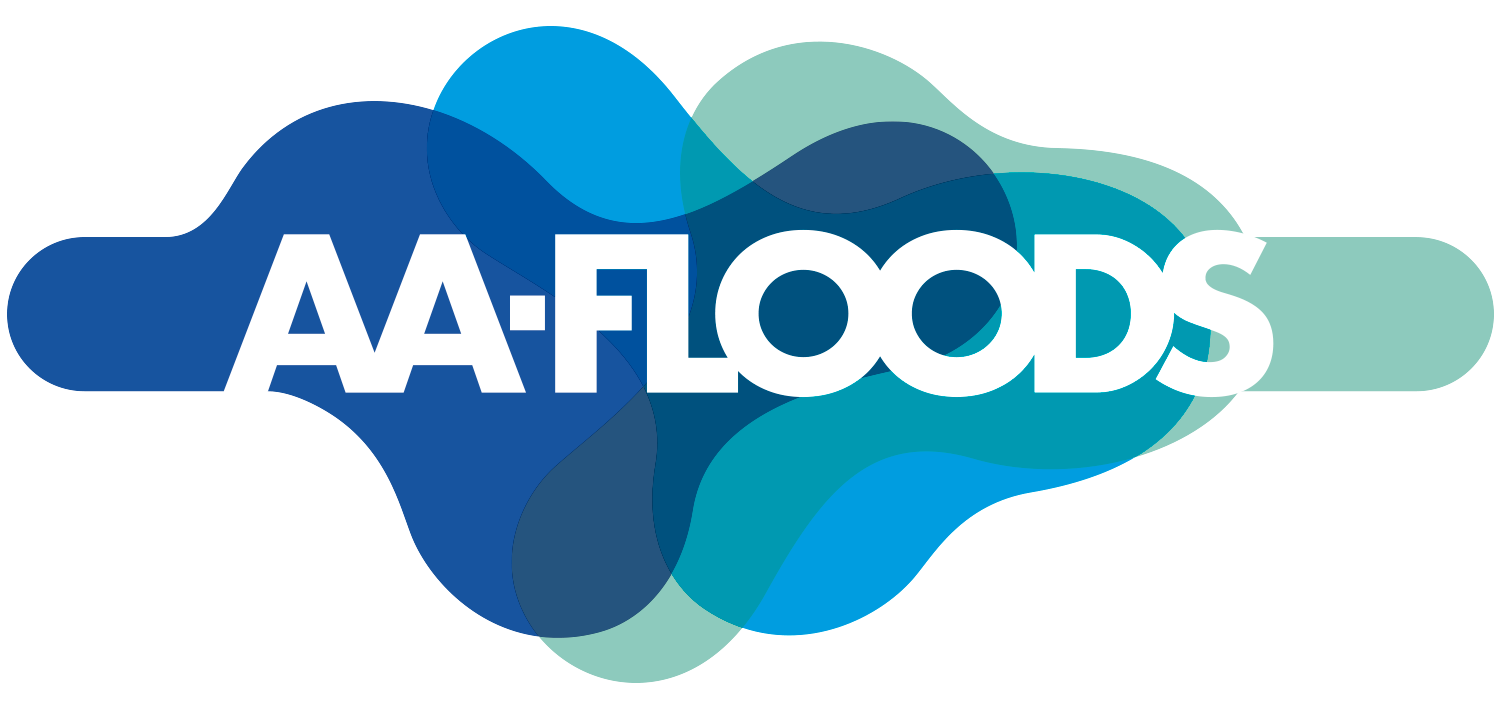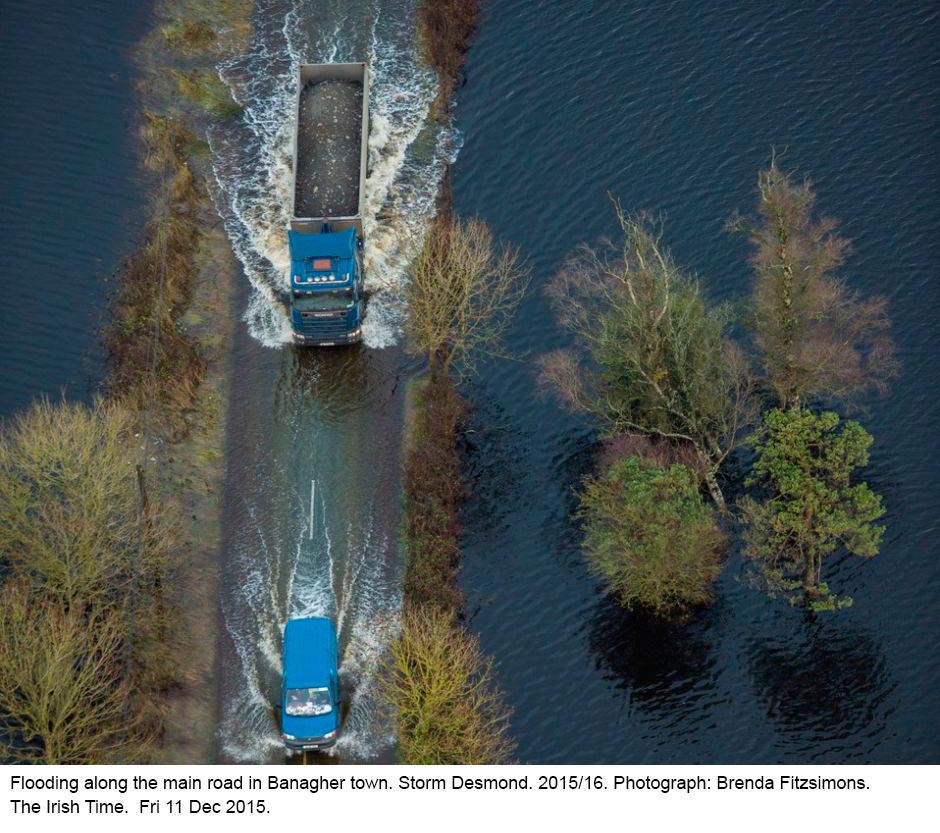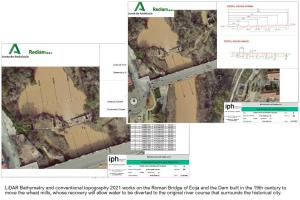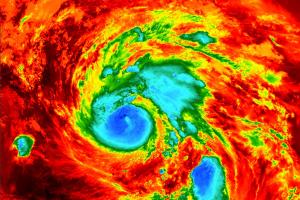To plan, prevent, prepare, protect and recover after a hazard such as a flood, a thorough understanding of the impact such an occurrence might have at various levels is required. There is no doubt that floods are the amongst the most common and widespread natural disasters. Flooding may have considerable impacts on people and society, property, critical infrastructure, environment and cultural heritage. Four of these impacts are given a brief summary below, while the flood impact on transport infrastructure is given a more thorough account, with a focus on Irish experience.
Impacts on people and society. Floods can impact individuals in a variety of ways, including inflicting injury and/or illness, forcing people to relocate or abandon their belongings, and even resulting in fatalities. In addition, floods may have a wide-ranging impact on individuals and communities when they disrupt access to community services or infrastructure such as schools, health care etc., for a short or lengthy period of time.
Damage to property. Property can be severely damaged by flooding. Flooding might result in damage to household items, electrical and other utilities, as well as structural damage. As the level of damage is usually proportional to the depth of flooding, significant destruction might leave homes uninhabitable for months.
Impacts on the environment. Flooding degrades the environment by removing the vegetation, eroding the soil and facilitating riverbanks erosion or sedimentation. Floodwaters can transport pollutants, such as bacteria and pesticides, affecting water quality and ecosystems.
Damage to cultural heritage. Floods can wreak havoc on cultural heritage sites. Archives and museums are particularly vulnerable to flash floods characterized by a rapid increase and decrease in floodwaters.
Damage to infrastructure. Flooding can significantly damage infrastructure, such as transport or utilities like electricity, gas and water supply, affecting individuals and communities substantially.
Transport networks play an essential role in everyday economic activities by facilitating the movement of goods and people. In case of emergency situations caused by extreme weather events, transport infrastructure is essential in rescue and evacuation operations. Consequently, the impact of flooding on infrastructure can widen the impact of flooding well beyond the local region which is inundated.
The impact of floods on Ireland’s transportation infrastructure
Ireland, where AA-Floods partner Trinity College Dublin is located, is known as the country where “it’s always raining”. And the truth is that it often is! But the climate of Ireland is changing, with effects already being noticed and projected to continue and worsen in accordance with global climatic conditions. According to Met Eireann, the Irish Meterological Agency, precipitations observed at most stations in 2020 were above average. Throughout the years, violent weather phenomena, such as storms, have ravaged the Emerald Isle, bringing tremendous floods and damage.
Three forms of flooding affect Ireland: pluvial, fluvial and from groundwater sources. The first kind is caused by heavy and persistent rainfall. The second form of flooding occurs when rivers overflow their banks. Finally, the third form of flooding is caused by oversaturated soil in the turlough regions. The following are some of the significant floods that have occurred in Ireland during the recent decades, and the economic damage they have caused to the transport infrastructure, influencing the recovery process in the affected areas.
Hurricane Charley produced massive flooding in August 1986
Hurricane Charley reached Ireland on the afternoon of 25th August, 1986, bringing heavy rain of more than 200 mm in less than 24 hours that caused dangerous flooding along the east coast. One of the most affected areas was the mountains area in South Dublin and County Wicklow, amongst the most densley populated urban areas on the Island. Six bridges were completely destroyed and three were badly damaged due to scour caused by flooding. Four more private road bridges collapsed. Damaged culverts, heavy scouring, material washed down from higher ground, as well as fallen trees and telegraph cables prevented the use of many kilometres of road. Damage of IR£3,000,000 (equivalent to $9.9 million today) to roads and bridges were registered in the County Wicklow alone. For the entire country, the Irish Government allocated IR£6,449,000 (equivalent to $21.1 million today) just for road and bridge repairs.
Fluvial flooding following exceptional rainfall in 2009
Fluvial floods caused by the exceptional rainfalls in November 2009 had a significant impact on transportation infrastructure. According to Met Eireann, there have been areas in Ireland where it has rained for the entire month, with heavy precipitation occurring for more than two-thirds of the month (see Figures 1 and 2). Traffic on many national roads was severely disrupted, while regional and local roads in the affected areas were impassable. The cost of repairing the roads only, was estimated to be more than €225 million.
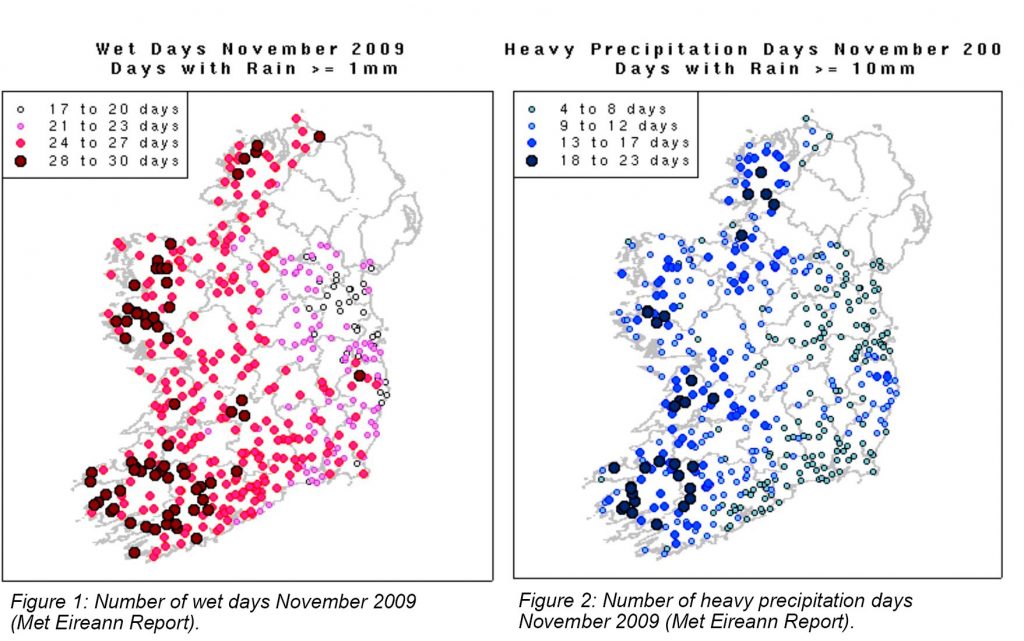
Winter 2013/2014
According to research from the National University of Ireland, Maynooth, the winter of 2013/2014 was the ‘stormiest’ for the 143 years during which records have been kept, given the frequencies and intensities of storms reported that season. From mid-December 2013 until the beginning of January 2014, Ireland was pounded by a storm every three days. Rainfall totalled 550 mm, or 173 percent above average. Damage to the road network was €16.6 million, with an additional cost of €6.95 million for rail, airports and Irish Coast Guard infrastructures. One storm, Storm Darwin (12th February 2014) caused more damage to the transportation system and inflicted the biggest structural damage. The cost of restoring the Storm Darwin’s damage to roads and other transportation facilities was €13.5 million.
Winter 2015/2016
The average precipitation recorded in Ireland in the winter of 2015/2016 was over 600 mm. Storm Desmond (Figure 3) and Storm Frank were the two principal storms that battered Ireland in late 2015 and early 2016 causing extensive flooding. Local roads were severely impacted although a significant damage has been noted on the national and regional roads and the rail network. The Irish Government allocated a total of €106 million for repairs to the Transport Sector. A budget of €90 million was allocated for regional and local roads, €8 million for national roads and €8 million for rail network.
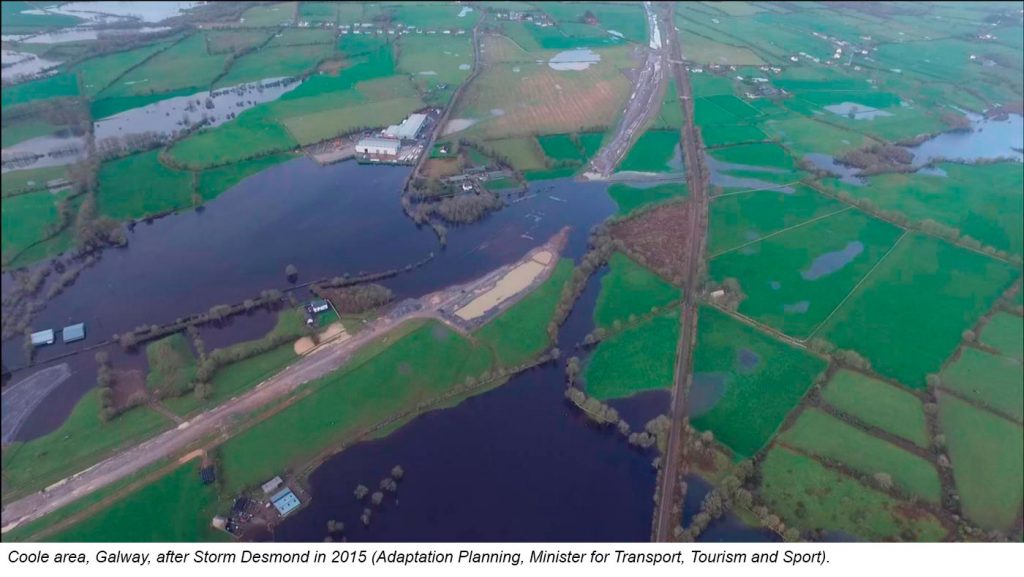
In the examples above we present only the economic damage of floods to transportation network. There is a link between the intensity of the flood events and damage to transport infrastructure. Transport networks are critical not only for the evacuation process during the response phase, but for the effective recovery process following a flood event. After a flood, transport infrastructure (roads, railways, ports) aids in the recovery of economic activity as well as the reconstruction of critical infrastructure. Damaged infrastructure (roads for example) can isolate vulnerable people at risk at the time of and after an event, making it difficult for rescue teams to reach them (Haiti could serve as the most recent example). Flood-damaged infrastructure might increase the price of goods and services as well as commuting costs, not just at local level, but regionally also. Likewise, some individuals might be unable to go to work, preventing them from earning an income, while others cannot access critical services, as health care. Following a disaster, the recovery of the transportation sector is an essential part of the overall recovery.
Current efforts of AA-Floods are focused on expediting the recovery procedures of those impacted by flooding in the Atlantic Area, taking into account of all potential impacts on those who have been affected by flooding.
Elena-Alexandra Micu
Trinity College Dublin
Noviembre de 2021
